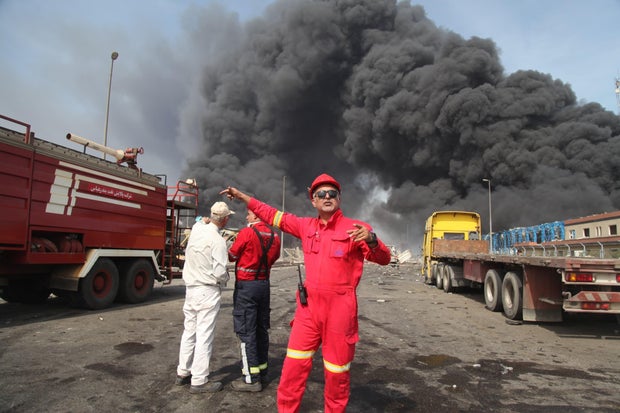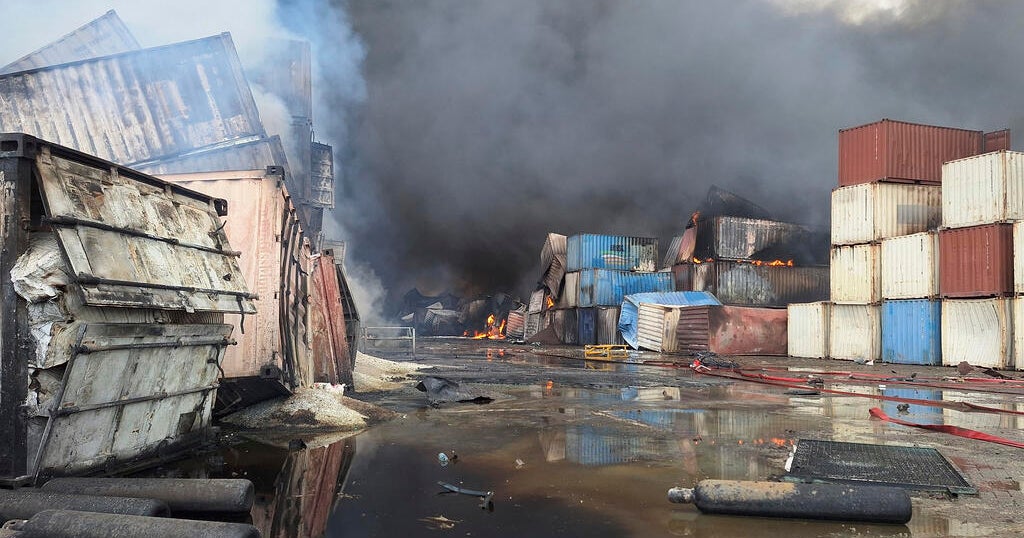Explosion at Shahid Rajaei Port Claims Lives and Raises Concerns
A devastating explosion and subsequent fire at the Shahid Rajaei port in southern Iran on Saturday have resulted in the deaths of at least 40 individuals and injuries to approximately 1,000 others. The incident reportedly involved a shipment of ammonium perchlorate, a chemical commonly used in missile propellant, raising alarms about safety protocols during cargo handling.
Emergency Response and Damage Control
Rescue operations were swiftly deployed, with helicopters and aircraft engaged in firefighting efforts throughout the night. By Sunday morning, local authorities reported that the flames were under control, and activities at the port resumed, with footage showing containers being unloaded from a commercial ship.
Government Response
The Iranian Interior Ministry has initiated an investigation into the causes of this large-scale explosion. Iranian President Masoud Pezeshkian visited the site, expressing the need to uncover the reasons behind such a tragic event, which left significant damage across the port area. “We have to find out why it happened,” Pezeshkian stated during a meeting aired on state television.
Following the explosion, provincial Governor Mohammad Ashouri announced a three-day mourning period. Reports indicate that only 190 of the injured individuals remain hospitalized as of Sunday, highlighting the urgent need for medical care in the wake of this incident.
Context of the Incident
This tragic event unfolded during a critical moment, coinciding with the third round of negotiations between Iran and the United States pertaining to Iran’s nuclear program in Oman. Despite the gravity of the incident, Iranian officials have not suggested that it was an attack, although caution remains high due to historical instances of sabotage and assassinations targeting Iranian assets.

Speculations and Accusations
While Iranian authorities have denied that missile fuel was involved, independent security analysts contend that the fire resulted from mismanagement of hazardous materials intended for military use. A report from the private security firm Ambrey notes that the port previously received shipments of ammonium perchlorate, ostensibly to replenish depleted missile stocks amid ongoing regional conflicts.
This latest explosion sparks comparisons to the catastrophic Beirut port explosion in 2020, which exacerbates concerns about the safe handling of dangerous substances in ports worldwide.
Investigation and Future Implications
As investigations unfold, further details regarding the cause of the explosion remain scarce. Local authorities have indicated that hazardous goods stored improperly in the port area could have contributed to the blast. Video evidence suggests that a significant fire was visible prior to the explosion, hinting at the involvement of chemical compounds.
Shahid Rajaei port, strategically located on the Strait of Hormuz, has previously been a target of cyberattacks and other forms of interference, further complicating Iran’s security situation amidst a tense geopolitical landscape.
After this tragic incident, Iran faces not only a humanitarian crisis but also heightened scrutiny regarding its safety practices and accountability for hazardous material handling.
Conclusion
This incident at Shahid Rajaei port underscores the need for stringent measures to ensure safety and security amidst ongoing political tensions. The outcome of investigations will likely steer both domestic and international responses in the wake of this catastrophe.

